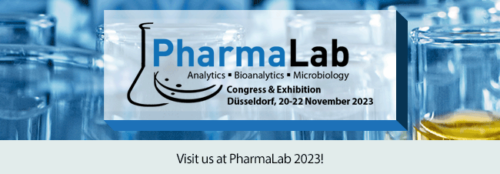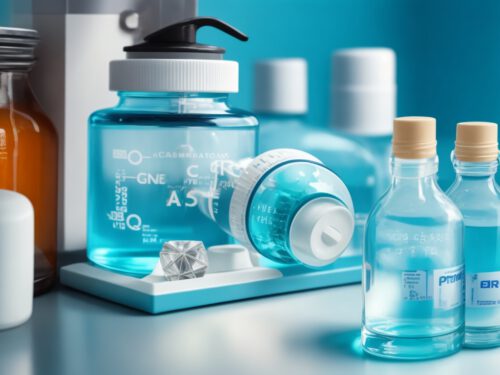Introduction
Microbiological testing plays a crucial role in identifying and studying microorganisms in industries such as food, pharmaceuticals, and the environment. Traditionally, the classical culture-based method has been used for this purpose. However, in recent years, nucleic acid-based testing has gained significant importance. In this article, we will compare the classical culture-based method with nucleic acid-based testing and highlight the advantages of the latter for microbiological testing.
The Classical Culture-Based Method
The classical culture-based method involves the cultivation of microorganisms on nutrient media, followed by their identification and quantification. Microorganisms are cultured on specialized agar plates or in liquid media. Subsequently, they are identified through morphological, biochemical, or immunological tests. Although this method is widely used, it has some disadvantages.
Challenges of the Classical Culture-Based Method
The classical culture-based method is time-consuming and requires longer incubation periods for microbial growth. This can lead to delays in result delivery, particularly in areas such as personalized therapy using Advanced Therapeutic Medicinal Products (ATMPs), Gene Technological Therapeutic Medicinal Products (GTMPs), or in the food industry where quick decisions regarding safety and quality need to be made. Moreover, culturing certain microorganisms using the classical method can be challenging, as they may require specific growth conditions.
Nucleic Acid-Based Testing
In contrast to the classical method, nucleic acid-based testing involves the direct detection of nucleic acids, such as DNA or RNA, from microorganisms. This method enables faster and more precise identification of microorganisms. It includes techniques such as polymerase chain reaction (PCR), quantitative PCR (qPCR), DNA sequencing, and other molecular methods.
Advantages of Nucleic Acid-Based Testing for Microbiological Testing
Speed and Efficiency
Nucleic acid-based testing provides faster results compared to the classical method. PCR techniques can deliver results within hours or even minutes, speeding up decision-making and response time.
Sensitivity and Specificity
Nucleic acid-based testing allows the detection of even small amounts of microorganisms. By using specific target markers and highly sensitive detection methods, it offers improved sensitivity and specificity compared to culture-based methods.
Versatility
Nucleic acid-based testing enables the identification and study of a wide range of microorganisms, including those that are difficult to culture or non-culturable. This opens up new possibilities in microbiology and facilitates the exploration of previously unknown microorganisms.
Automation and Standardization
Nucleic acid-based testing can be automated and standardized, enhancing the reproducibility and comparability of results. This is particularly crucial in fields that require high throughput and accuracy.
Applications of Nucleic Acid-Based Testing
Nucleic acid-based testing has found applications in various areas of microbiology.
Food Industry
In the food industry, microbiological safety is of paramount importance. Nucleic acid-based testing enables rapid and reliable identification of pathogens such as Salmonella, Listeria, and E. coli. It can also be used to monitor hygiene conditions in food processing facilities, facilitating the early detection of contaminations and appropriate measures.
Pharmaceutical Industry
Ensuring the microbiological quality control of pharmaceuticals is essential in the pharmaceutical industry. Nucleic acid-based testing enables the identification of microbial contaminations in raw materials, finished products, and production environments. This helps minimize the risk of product contamination and ensures patient safety.
Environmental Monitoring
Nucleic acid-based testing is also employed in environmental monitoring to assess the microbiological quality of water, soil, and air. It enables the identification of environmental microorganisms that play a crucial role in monitoring water bodies or evaluating biological processes in ecosystems.
Clinical Diagnostics
Nucleic acid-based testing has revolutionized medical diagnostics. It is used for the identification of pathogens such as bacteria, viruses, and fungi. The rapid and accurate diagnosis assists physicians in selecting appropriate therapies and contributes to the fight against infectious diseases.
Challenges and Future Developments
While nucleic acid-based testing offers numerous advantages, there are also challenges to consider.
Cost
Nucleic acid-based testing can be more expensive compared to the classical method. Equipment acquisition, reagents, and personnel training can contribute to higher expenses. However, it should be noted that prices for nucleic acid-based testing procedures have already decreased due to technological advancements and improved efficiency.
Complexity
Nucleic acid-based testing requires specialized knowledge and trained personnel who can correctly perform the techniques. The interpretation of results and prevention of contamination require careful workflows and quality controls.
Advancements
The technology of nucleic acid-based testing is continually evolving. New methods such as Next-Generation Sequencing enable even more detailed analysis of microorganisms and open up new application areas. The integration of automation and robotics into testing procedures is expected to further enhance efficiency and reliability.
Conclusion
Nucleic acid-based testing undoubtedly offers numerous advantages for microbiological testing over the classical culture-based method. It provides faster results, improved sensitivity and specificity, and greater versatility. Consequently, it has become widely adopted in various fields such as the food industry, pharmaceutical industry, environmental monitoring, and clinical diagnostics. However, it is important to acknowledge that the classical method still holds significance and can be useful in specific situations. The future development of nucleic acid-based testing will help overcome existing challenges such as cost and complexity. With technological progress and ongoing research, testing procedures will become more efficient, cost-effective, and user-friendly. A combination of both methods, depending on specific requirements and goals, can lead to comprehensive and effective microbiological testing, ensuring safety and quality in various domains.
Links and resources on the topic of “Nucleic Acid-Based Testing”
- Pandya S, Ravi K, Srinivas V, Jadhav S, Khan A, Arun A, Riley LW, Madhivanan P. Comparison of culture-dependent and culture-independent molecular methods for characterization of vaginal microflora. J Med Microbiol. 2017 Mar;66(2):149-153. doi: 10.1099/jmm.0.000407. PMID: 28260585; PMCID: PMC7147076.
- Zhou Y, Shi W, Wen Y, Mao E, Ni T. Comparison of pathogen detection consistency between metagenomic next-generation sequencing and blood culture in patients with suspected bloodstream infection. Sci Rep. 2023 Jun 10;13(1):9460. doi: 10.1038/s41598-023-36681-5. PMID: 37301921; PMCID: PMC10257643.
- Smith CJ, Osborn AM. Advantages and limitations of quantitative PCR (Q-PCR)-based approaches in microbial ecology. FEMS Microbiol Ecol. 2009 Jan;67(1):6-20. doi: 10.1111/j.1574-6941.2008.00629.x. PMID: 19120456.Smith CJ, Osborn AM. Advantages and limitations of quantitative PCR (Q-PCR)-based approaches in microbial ecology. FEMS Microbiol Ecol. 2009 Jan;67(1):6-20. doi: 10.1111/j.1574-6941.2008.00629.x. PMID: 19120456.
- Mothershed EA, Whitney AM. Nucleic acid-based methods for the detection of bacterial pathogens: present and future considerations for the clinical laboratory. Clin Chim Acta. 2006 Jan;363(1-2):206-20. doi: 10.1016/j.cccn.2005.05.050. Epub 2005 Sep 1. PMID: 16139259.
- Pai M, Flores LL, Hubbard A, Riley LW, Colford JM Jr. Nucleic acid amplification tests in the diagnosis of tuberculous pleuritis: a systematic review and meta-analysis. BMC Infect Dis. 2004 Feb 23;4:6. doi: 10.1186/1471-2334-4-6. PMID: 15102325; PMCID: PMC387423.
Do you need consultation or want to develop a custom assay for your application? We are here to assist you. Contact us here for further assistance.






